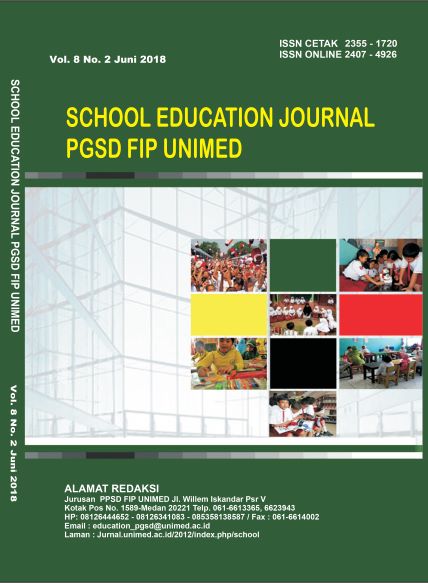THE DEVELOPMENT OF READING LEARNING MATERIAL BASED ON DRTA STRATEGY AS AN EFFORT TO BUILD A LITERATE GENERATION IN FIFTH GRADE (5th) OF PRIMARY SCHOOL
DOI:
https://doi.org/10.24114/sejpgsd.v8i2.10198Abstract
This study aims to develop reading learning materials based on DRTA strategy (Direct Reading Thinking Activity) as an effort to build a literate generation in 5th Grade of Primary School. It is well known that the literacy study is one part of the implementation policy of the 2013 curriculum in primary school. This policy implies that the learning process implemented so far has not been able to adopt the optimal process of literacy learning. There are three main requirements to be considered in the development research conducted, such as; the validity, practicality and effectiveness of teaching materials developed. The development model used is a 4-D model, namely: define, design, development and disseminate. The results showed that the developed teaching materials declared were valid, practical and effective to use in the reading learning process of 5th grade in Primary School. Thus, the use of DRTA-based teaching materials in reading learning deserves to be considered as an effort to build literate generation in 5th Grade of Primary School.Keywords: teaching material, reading, DRTA Strategy, literate generationDownloads
Published
Issue
Section
License
Authors whose manuscripts are approved are approved as follows:
The publication rights for all journal manuscript materials published/published on the SEJ (School Education Journal) E-Journal site are held by the editorial board with the author's knowledge (moral rights remain with the manuscript authors).
The formal legal requirements for accessing this electronic digital journal article are subject to the terms of the Creative Commons Attribution-ShareAlike (CC BY) license, which means that E-Journal SEJ (School Education Journal) has the right to store, transfer media/format, manage in the form of a database, maintain, and publish articles without asking permission from the author as long as the author's name remains as the copyright owner.
Manuscripts published/published electronically are open access for educational, research, and library purposes.

